
The University of Szeged has announced the establishment of a cutting-edge facility dedicated to the production of radiopharmaceuticals – advanced compounds used in medical imaging and cancer therapy. The groundbreaking ceremony took place on April 8 in the courtyard of the Department of Nuclear Medicine at the University’s Albert Szent‑Györgyi Clinical Center. The event was attended by Rector Prof. Dr. László Rovó, Chancellor Dr. Judit Fendler, and Prof. Dr. László Pávics, Head of the Department of Nuclear Medicine.
The University of Szeged has long been at the forefront of nuclear medicine research and diagnostics. Continuing this tradition, the University is now establishing a new facility – the Regional Cyclotron and Radiopharmaceutical Supply Center – which will stand out for its use of cyclotron technology to produce radioisotopes and, subsequently, radiological drugs. This development represents a significant step toward aligning regional healthcare services with international standards of excellence. Once completed, the facility will enable the University of Szeged to produce radiopharmaceuticals that play a vital role in diagnostics, research, and education.
Advancing cancer diagnosis and therapy to the next level
Radiopharmaceuticals are specialized drugs that contain small amounts of radioactive material, enabling physicians to visualize internal structures – such as cancerous lesions – within the body. During imaging procedures like PET or SPECT scans, these substances become illuminated, allowing for more accurate detection of diseases. The new facility will harness cyclotron technology to produce both radiopharmaceuticals and contrast agents for use in PET/CT and SPECT/CT diagnostics, as well as in therapeutic applications. In certain cases, these agents are not only critical for identifying malignant tumors but can also be used in targeted therapies – for example, to selectively destroy cancer cells.
As Rector Prof. Dr. László Rovó noted at the event, just a few weeks earlier he had attended the inauguration of the renovated cardiac catheterization laboratory at the Cardiology Center of the Albert Szent-Györgyi Clinical Center (SZTE SZAKK). Now, he expressed pride in announcing another major milestone in the University’s continued progress: the establishment of the Regional Cyclotron and Radiopharmaceutical Supply Center. He also recalled that the fundamental concept behind the cyclotron was first developed by Hungarian physicist Sándor Gaál in 1929. Yet, due to an unfortunate turn of events, his findings were never published – depriving both Gaál and Hungary of the international recognition they deserved for a discovery that would later transform nuclear science.
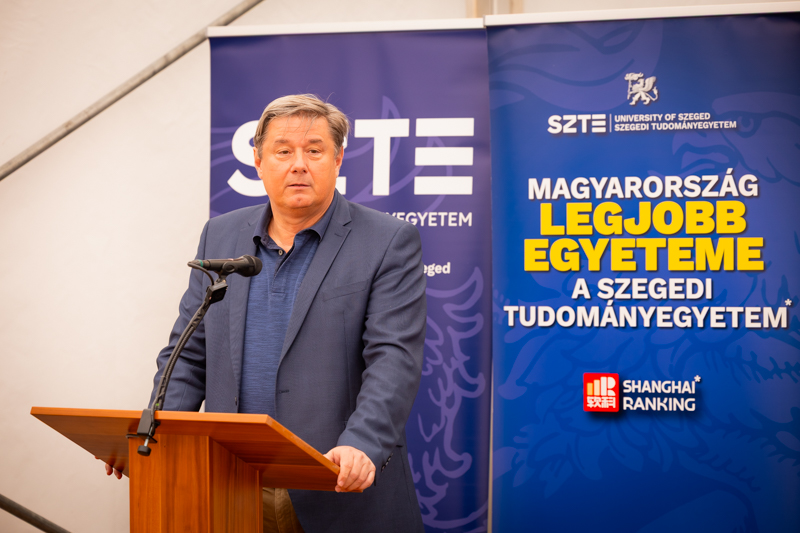
Rector Prof. Dr. László Rovó speaking at the event
Photo: Ádám Kovács-Jerney
Addressing a critical gap
Prof. Dr. László Rovó emphasized that the new cyclotron facility will address a critical gap in Hungary’s medical infrastructure. He also recognized the pioneering contributions of Prof. Dr. László Pávics in advancing the modern treatment of prostate cancer, noting that the new technology will further expand possibilities in this area. This is particularly relevant given that the Department of Nuclear Medicine at the University of Szeged recently introduced a nationally unique therapy based on radioisotopes – an approach that has been shown to extend the survival of patients with advanced-stage prostate cancer. This innovative treatment is closely linked to Professor Pávics, under whose leadership Hungary’s first prostate-specific, radioisotope-based cancer therapy was performed at the University of Szeged. Professor Rovó described the development as a true paradigm shift in patient care, with its impact expected to reach well beyond the local context and benefit the wider region.
New opportunities in education, research, and healthcare
Dr. Judit Fendler, Chancellor of the University, recalled that the idea of developing a cyclotron was part of a broader initiative involving four major equipment acquisitions, made possible through funding from the EU’s Recovery and Resilience Facility (RRF). She explained that, in line with a strategic decision by the University’s leadership, the funds would be allocated primarily not to building projects, with the sole exception of dormitory development, but to high-value equipment supporting the University’s four core priorities: education, research, healthcare, and market applicability. The cyclotron investment, she noted, exemplifies this forward-thinking approach.
“This device will open up tremendous opportunities in pharmaceutical and medical training. It will also significantly enhance the efficiency of healthcare delivery by enabling in-house production of radiopharmaceuticals. I believe there is strong market demand for a variety of these compounds, and we will be well-positioned to supply the region with high-quality products at optimal cost and value. In fact, the entire investment is expected to be self-sustaining,” the Chancellor added.
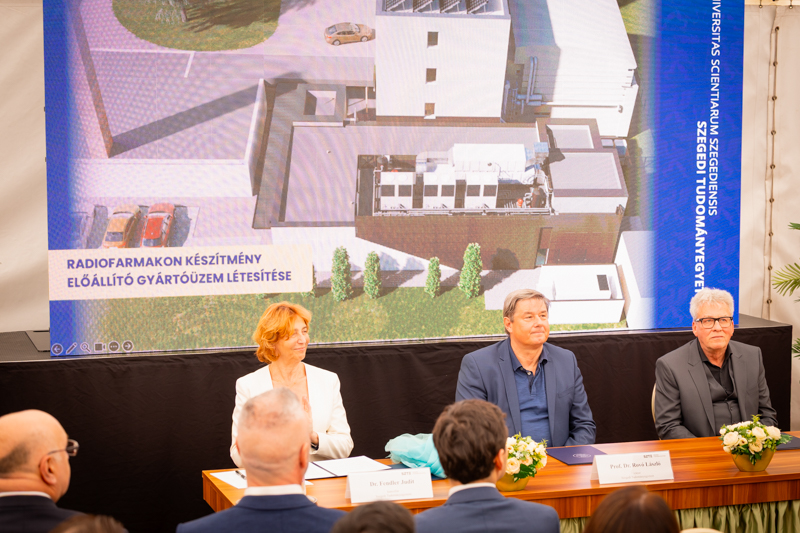
University leaders at the event: Chancellor Dr. Judit Fendler, Rector Prof. Dr. László Rovó, and Head of the Department of Nuclear Medicine, Prof. Dr. László Pávics
Photo: Ádám Kovács-Jerney
Prof. Dr. László Pávics, Head of the Department of Nuclear Medicine, reflected on the significant advancements made over the past decade, including the modernization of the institute’s equipment and the establishment of a state-of-the-art therapeutic unit. With the addition of the cyclotron investment, he noted, the development process has now reached its full potential. “This cutting-edge facility will enable us to meet the highest international standards,” stated Professor Pávics. He also emphasized that the new center will not only produce radiopharmaceuticals for patient care but will open up valuable opportunities for research – particularly in developing new formulations in collaboration with experts from the Faculty of Pharmacy, the Faculty of Science and Informatics, and the Faculty of Engineering at the University of Szeged.
 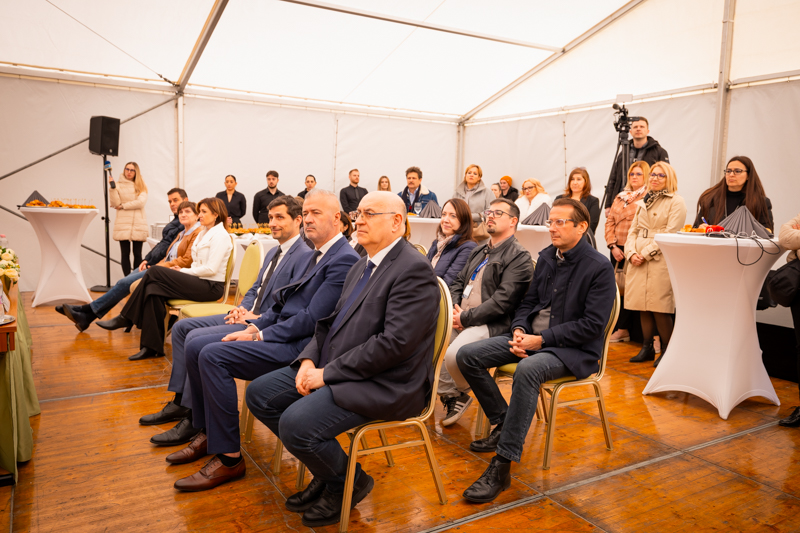 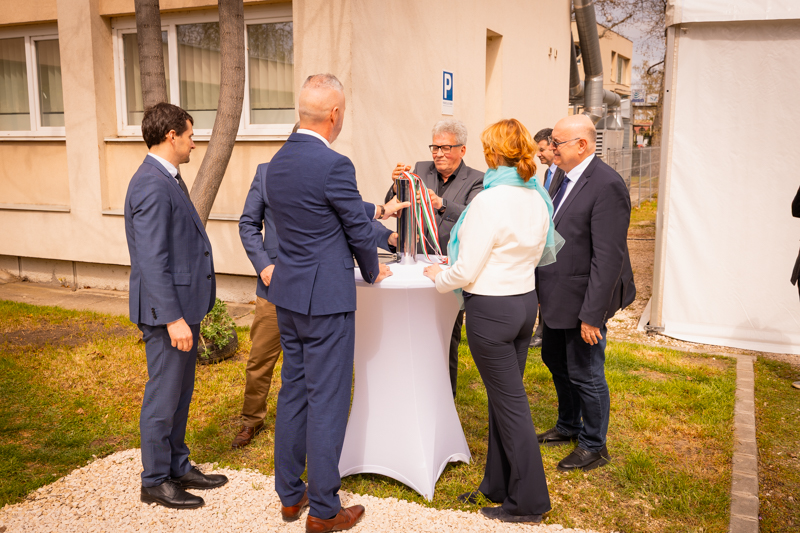 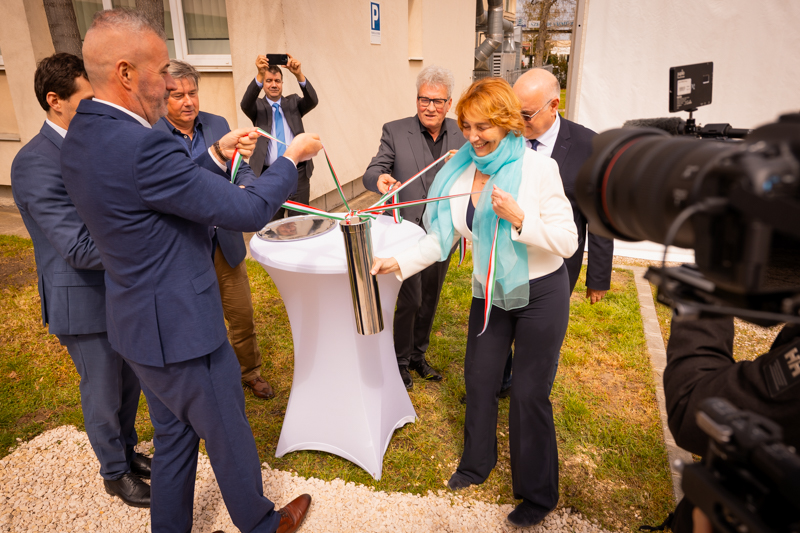 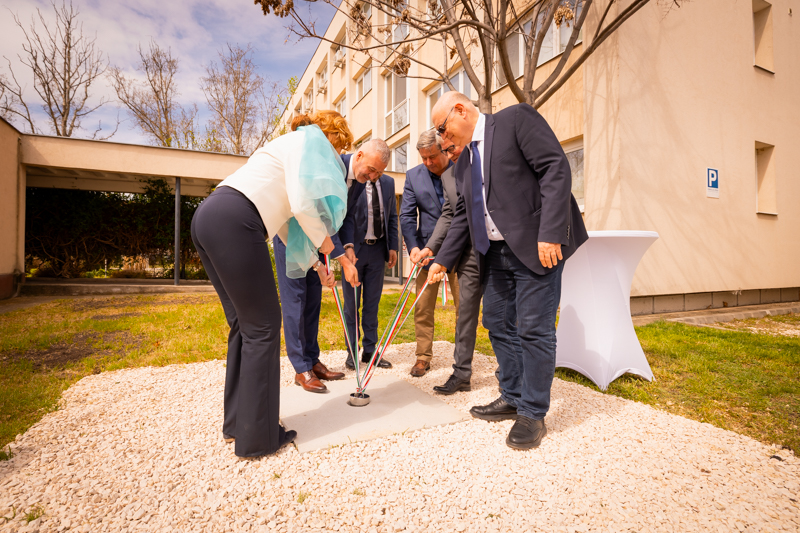 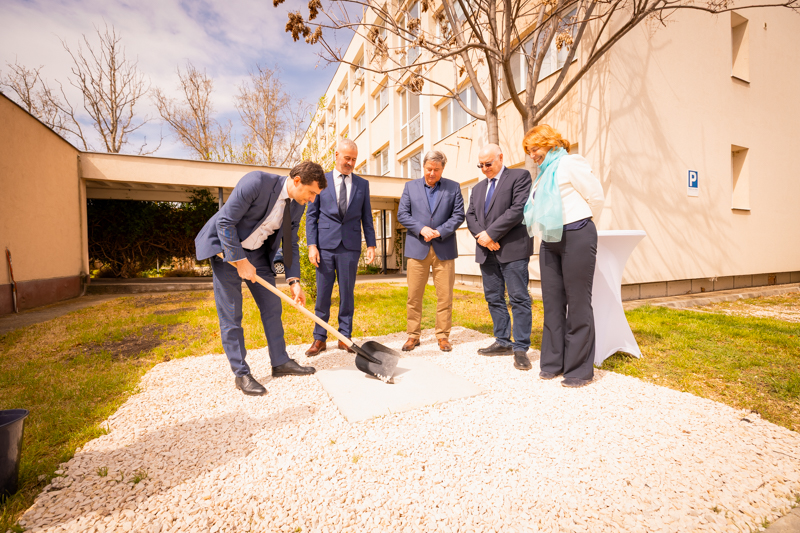 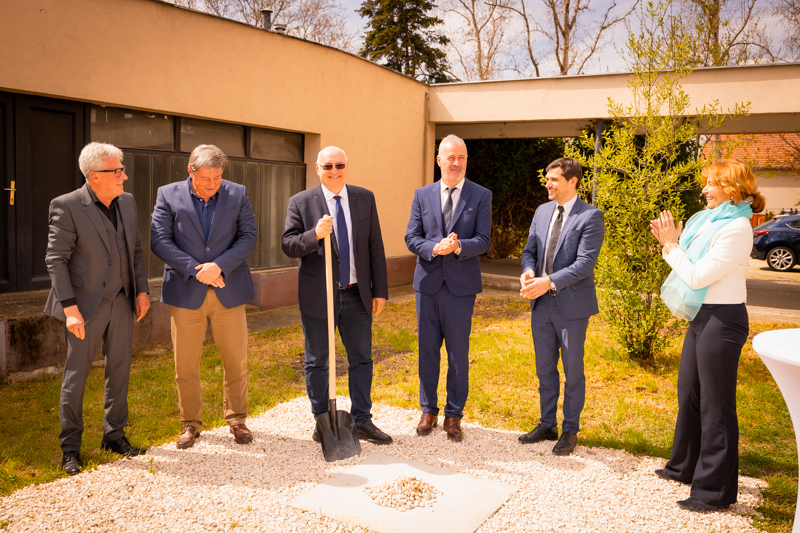 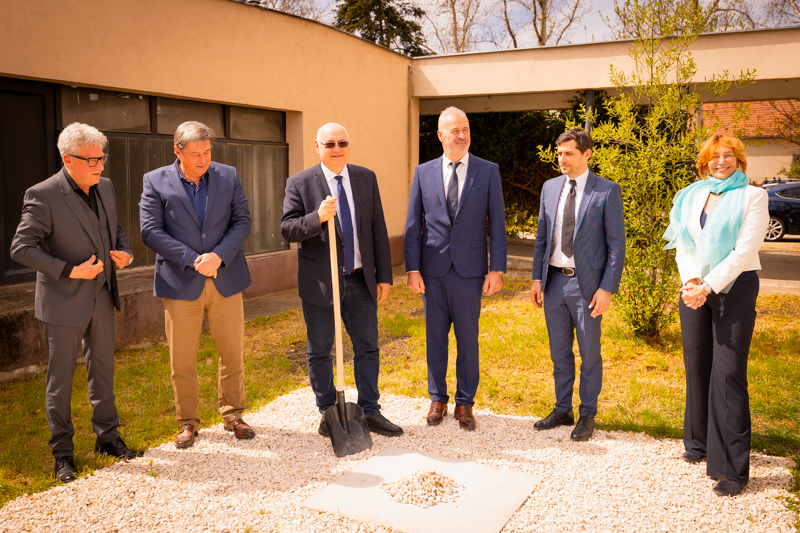 |
| Groundbreaking ceremony held for the University of Szeged’s Regional Cyclotron and Radiopharmaceutical Supply Center Photo: Ádám Kovács-Jerney |
At the event, the foundation stone of the new facility was laid by Prof. Dr. László Rovó, rector; Dr. Judit Fendler, chancellor; Prof. Dr. László Pávics, head of the Department of Nuclear Medicine; and Prof. Dr. Csaba Lengyel, president of the Albert Szent-Györgyi Clinical Center at the University of Szeged (SZTE SZAKK).
The construction of the cyclotron and radiopharmaceutical production facility is being carried out with an investment of 3 billion forints. The general contractor for the project is AC Komfort Kft., and the equipment will be supplied by GE Healthcare.
Original Hungarian text by Tímea Fülöp
Feature photo: Groundbreaking ceremony for the SZTE Regional Cyclotron and Radiopharmaceutical Supply Center
Photo: Ádám Kovács-Jerney

